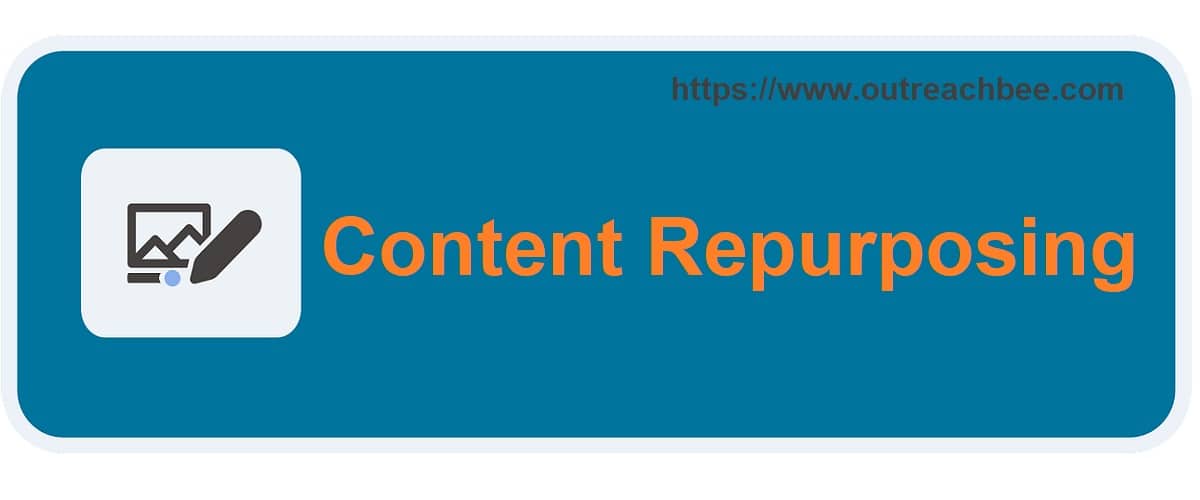To stand out in the content marketing business, you’ll need to have a few tricks up your sleeve. Content repurposing is one of the techniques business owners have long been using to strengthen their online presence through increased reach and engagement. It’s a strategy that ensures high-performing content gets the attention it deserves.
However, this process can prove challenging to execute. It requires a considerable investment of time and resources. So, ensure you work with a seasoned content marketing agency to help you formulate a robust strategy that will see your high-performing content increase in exposure engagement.
That said, this write-up delves into the art of content repurposing to help you strengthen your online presence by putting it in front of the right audience. Let’s start with the definition.
What Exactly is Content Repurposing?
Also known as content recycling, repurposing content refers to the act of turning existing high-performing material into new formats to boost its value so it can expand your reach and increase your engagement rate. Basically, it’s a way of adding a fresh breath of life to your ever-green content, transforming it into a versatile tool to reach diverse audiences through different platforms.
This way, you can produce consistent value for your target audience to ensure your message remains pertinent across various platforms.
The importance of content repurposing includes:
- Growing your brand’s influence
- Boosting your credibility within your industry/niche
- Spreading awareness
- Attracting a new audience
How To Identify Content Repurposing Opportunities for Various Content Types
You’ll need to perform key performance metrics on your content to identify repurposing opportunities. Here are strategies on how to identify content repurposing opportunities for your content.
1. Measuring the Engagement Rate in Your Social Media Posts
This performance metric helps determine how the target audience has interacted with your material since it first went live. In this case, you’d use KPI tools based on the type of content you are measuring to help determine the engagement rate. Some of the metrics you’d measure include likes, shares, and comments on social media.
2. Tracking the Performance of Your Blog Site
If it’s a blog post, the metrics to measure include bounce rate, conversion, impression, and engagement. You can use free tools like Google Console and Google Analytics to help you identify your evergreen content.
Also, use premium tools like Moz Pro and SEMrush to conduct your site’s SEO performance, including organic traffic and keyword rankings.
3. Using the A/B Testing Technique
You can also conduct an A/B testing on your content to identify content repurposing opportunities. It involves comparing two versions of web content to see which one has had a better performance since it went live.
It’s also an excellent way to identify platforms and formats best suited for your content repurposing plan.
Types of Content You Can Repurpose
Content repurposing can be used on a wide range of materials. This includes;
1. Blog Posts
Blog posts can be recycled into videos, podcasts, social media posts, or infographics. In this case, the secret is to ensure you are not repurposing content with a short shelf life, such as news and seasonal events. The ideal content for recycling is quality, relevant, and the one with consistent interest from your audience.
2. Infographics
Infographics are excellent materials to transform into individual images to post on your social media accounts. The key is to ensure the images are of high quality. You can also turn them into written content, including long-form blog posts.
3. Statistical Content
Data-rich statistical content can be broken down into graphs or charts. This makes it easy for the target audience to digest your insights. In this case, ensure your graphs or charts are visually appealing and easy to understand.
4. Videos
Identify your best-performing videos and transform them into blog posts. Besides, video content can be transformed into short clips or audio extracted to create a podcast.
5. Podcasts
You can also repurpose your podcasts to form shorter audio clips or blog posts. Besides, podcasts can be recycled into video content for YouTube by adding appealing visuals.
6. Webinars
Webinars are the best materials to repurpose into a wide range of content because of their depth. You can turn them into online courses, e-books, blog posts, or videos for your social media accounts.
Moreover, webinars or workshops are excellent materials to help you generate more revenue for your business, as well as increase the lifespan of your expertise.
Steps to Follow When Repurposing Content
You’ll need a kee approach for your content repurposing strategy. This includes following the steps below:
- Determine your goals: Your goals will shape your content repurposing plan. This includes driving traffic, boosting SEO, driving conversions, increasing engagement, etc.
- Identify the target audience: You’ll also need to identify the target audience to ensure your content is put in front of the right people to fulfill its purpose.
- Identify the relevant, ever-green content: Use the necessary tools to assess the relevance of your content. Ensure you pick comprehensive, up-to-date topics.
- Identify the best platform to reach your target audience: in this case, the platform you choose aligns with your goals and the needs of your target audience.
Tips for Effective Content Repurposing
A lot of people make mistakes when repurposing their content. To avoid this, here are the tips to make sure your recycled content fulfills the intended purpose:
- Remain creative: Don’t just recycle your existing content for the sake of it. Ensure you create fresh, relevant, and appealing content from the existing material.
- Update outdated content: Refreshing or updating your content ensures it doesn’t lose its appeal to the target audience.
- Double Down on quality: Again, ensure the quality of your content remains top-notch. While the original material may have performed well, poorly repurposed content won’t achieve the desired results. Recycled content will perform based on the platform on which you post it and the audience engaging with it.
- Have a purpose in mind: This ensures the content you create aligns with your goals and resonates with the target audience. In doing so, you’ll also ensure that your brand’s voice remains consistent across all the platforms on which you intend to post your content.
- Track its performance: Just like using performance tracking tools to identify content worthy of repurposing, use the same tools to track the performance of your recycled materials. It’ll help you know if your strategy was effective and the areas in which to improve.
Conclusion
Content repurposing will ensure your ever-green, high-performing content meets your target audience’s format preference. To ensure your target audience sees and interacts with your relevant and valuable content, consider working with a reputable digital marketing agency to achieve your goals. Contact Outreach Bee during your free time and hop on a call to get the ball rolling.
About Author: Brian is a digital native with years of experience helping content marketing and link building SEO agencies bring their clients’ brands to life. With a keen understanding for crafting compelling and insightful content for humans and search engines, his efforts have earned him a spot in major link building agencies’ publications in Canada, including Outreach Bee and ArticleHub.co.
Beyond digital marketing, Brian likes hiking and motorcycles.



Content Marketing vs. SEO: Why You Need Both to Win Online
What is a Blog? – Definition, How to Start a Blog, and Why Your Business Needs One